Back pain is one of the most common complaints in people between 25 and 30 years old. Not only can they be caused by overwork, but they can also be symptoms of spinal or internal organ disease. Therefore, it is important to pay attention to your health and not to ignore this issue. After all, if pathological changes in the spine cause back pain, they will eventually lead to serious complications and even disability.
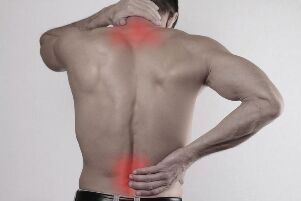
Reason
In many cases, the back will be injured due to natural causes: after doing physical labor, training hard, walking for a long time in high heels, etc. In this case, the pain is caused by the formation of lactic acid in the muscles, and in particularly difficult cases, there are micro-tear muscle sprains. Therefore, in order to eliminate them, you need to rest your back for a few days.
Pregnancy is a common cause of back pain. Since the body has undergone a lot of changes, especially in the late pregnancy, it can respond to this with waist pain. If they are not acute and are not accompanied by lower abdominal discomfort or abnormal discharge, then this is considered a normal variation. But at the same time, continuous changes, shifts in the center of gravity, and weight gain during pregnancy may aggravate chronic diseases or become the cause of the development of spinal degenerative malnutrition.
As women’s body burden doubles during pregnancy, it is very important to tidy the spine. Our clinic has developed and prepared a special comprehensive examination and treatment plan for pregnant women and women planning to become pregnant.
Degenerative malnutrition processes and other diseases of the spine most commonly cause back pain in men and women over 30 years old. With them, the pain can be located on any part of the back (neck, between the shoulder blades, in the lower back) and applied to the head, shoulders, arms, hips, legs, etc. The degree of pain may vary, and the severity includes acuteness, shooting, stretching, and soreness. , Always exists or occurs after physical exercise. All of these are important signs that help determine the cause of the development of pain syndrome. Therefore, an effective way to eliminate pain syndrome has been found.
The most common diseases related to back pain are:
- Osteochondrosis, protrusion and intervertebral hernia; Spine curvature (kyphosis, scoliosis, lordosis and combinations thereof);
- Myofascial syndrome.
Back pain is caused by spinal compression fractures (usually elderly or injured people, falling from heights, accidents), ankylosing spondylitis, spondylosis, spondylolisthesis and other spinal diseases.
In addition, the internal organs work abnormally, which may cause pain in different parts of the back. For example, neck pain can be accompanied by thyroid disease, lymph node inflammation, vascular disease, and back pain, and can indicate kidney, pelvic organ, and gastrointestinal diseases. In the middle of the back, discomfort in the shoulder blade area is very rare, but it can also occur. In addition to spine diseases, its appearance may also lie in the occurrence of diseases such as heart work.
But the essence of the problem is that any internal organ disease will not appear suddenly. They are almost always the result of segmental innervation, the mass of nerve impulses transmitted from the spinal cord to specific organs through nerve roots and nerve branches. Each level of the spinal cord corresponds to its own pair of spinal nerve roots, from which the nerve branches and then reaches the corresponding organ. If the spine changes, such as bending, displacement of vertebrae, and changes in the height and condition of the intervertebral disc, it will inevitably affect the condition of the spinal cord and spinal cord. When they change their natural parameters and positions, they may be squeezed by various vertebral structures or even injured. As a result, the ability of nerve impulses to be transmitted to the organs is even worse, causing them to seem insignificant at first, but they are progressively disordered. Organic changes gradually appear in the organs, which become the cause of disease development. Therefore, in the case of back pain and the discovery of internal organ pathology, the spine must be examined and the changes that caused its development must be found. Their influence will improve the efficiency of treatment of medical diseases, and most importantly, eliminate the prerequisites for their occurrence.
Each spinal motion segment has its own pair of nerve roots, which transmit signals to specific organs.
Osteochondrosis, herniation and intervertebral hernia
Osteochondrosis is the most common spinal disease, which occurs every second at different stages of development. It is accompanied by changes in degenerative dystrophy of the intervertebral disc, which is gradually destroyed.
According to the location of back pain and the corresponding process of degenerative disc dystrophy, osteochondrosis of cervical, thoracic and lumbar spine can be distinguished. The most common is that the lumbar intervertebral disc is destroyed, but it is rarely destroyed-the cervix, and only in rare cases can the diagnosis of thoracic osteochondrosis be diagnosed.
For osteochondrosis, the pain is a typical pain, which is weak at first, and will be painful after physical exertion or sitting for a long time. They gradually intensify and occur more and more frequently. As time goes by, the intervertebral disc becomes more and more depleted, so that its shell cannot withstand the load applied to it and deforms, that is, a protrusion is formed, and eventually it becomes a hernia. In the latter case, the annulus fibrosus is completely ruptured and the internal contents of the intervertebral disc can fall into the spinal canal.
In both cases, the protrusions will squeeze the roots of the spine, causing neurological syndrome. This means that in addition to the pain becoming sharp and intense, there will also be pain in the arms, legs, buttocks and other parts of the body, depending on which disc is deformed. Therefore, when the nerves of the cervical spine are squeezed, the shoulders and arms will feel pain, and when the nerves of the lumbar spine are squeezed, the hips and legs will also be painful. This is usually accompanied by sensory disturbances, including numbness, peristaltic sensations, and gradual muscle atrophy.
This disease is full of irreversible changes in nerve fibers, which can lead to paralysis and disability.
Curved spine
Curvature can be observed in any part of the spine. Today, it is very rare that the spine is completely flat. Therefore, almost every modern person has more or less deformities. It could be:
- Kyphosis-Strengthen the natural curvature of the spine in the cervical and thoracic region;
- Lordosis-the natural deflection of the lumbar spine increases;
- Scoliosis-lateral deformity of the spine.
In each case, curvature causes compression of nerve groups, which can also cause neurological syndrome. However, if osteochondrosis cannot be surpassed visually at the initial stage of development, the spine deformity can be easily diagnosed by the asymmetry of the position of the shoulder blade, pelvic bone, and abdominal protrusion or bulge.
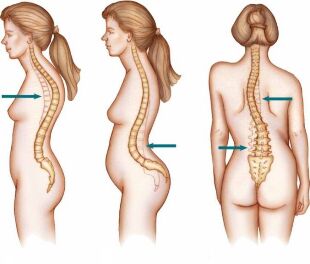
Myofascial Syndrome Myofascial syndrome is not a dangerous but rather painful condition in which certain muscle groups cramp due to stress or physical activity. Therefore, if you click on the place where back pain usually occurs under the background of absolute health, acute pain can occur again, which is an important diagnostic criterion.
Diagnose the cause of back pain
If back pain occurs, whether it is located in the neck, between the shoulder blades or in the lumbar area, it is recommended to consult a neurologist. If the pain spreads to other parts of the body, you must make an appointment with a chiropractor, vertebral surgeon, and neurologist as soon as possible, because this is a sign of the development of neurological syndrome.
Experts in our center use integrated methods for diagnosis and treatment, so they can quickly make a correct diagnosis. Diagnosis must first investigate the patient, during which time the nature of the complaint and the characteristics of work and rest should be clarified. The doctor must carefully examine the patient, palpate the spine, and perform special functional and neurological examinations. This allows you to fully understand the patient's condition, detect signs of neurological deficits, and assess the degree of damage. In order to confirm the diagnosis, you must specify:
- X-ray examination;
- CT;
- MRI.
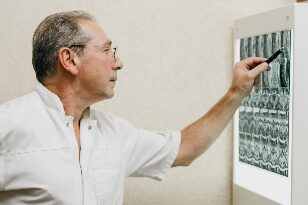
If there are no contraindications, MRI is always the first choice, because this method can provide the most complete data about the state of the spine, especially the intervertebral disc, so that even small changes in the condition can be diagnosed early and the pathological process can be intervened in time.
In our clinic, you can also learn more about body composition and the state of the vascular system, which involves the blood supply to internal organs, musculoskeletal muscles and the brain. Our experienced doctors will explain these findings to you in detail. The bioimpedance measurement method calculates the ratio of fat, muscle, bone and bone mass, total fluid, and basal metabolic rate. The recommended physical exercise intensity depends on the muscle condition. The metabolic process in turn affects the body's ability to recover. Through the index of active cell mass, the level of physical activity and nutritional balance can be judged. This simple and fast test helps us find endocrine disorders and take measures. In addition, for us, understanding the condition of blood vessels is also very important for preventing heart disease, high blood pressure, heart failure, diabetes and other diseases. Angioscan allows you to determine important indicators such as the biological age of blood vessels, its stiffness, pressure index (representing heart rate), and blood oxygen saturation. This screening is useful for men and women over 30, athletes, people who have suffered long-term and arduous treatment, and everyone who monitors their health.
If the diagnosis shows that the back pain is the result of the development of internal organ disease, refer the patient to a stricture specialist, such as a urologist, endocrinologist, gynecologist, gastroenterologist, cardiologist, etc.
Body composition analysis provides us with information about fat tissue and musculoskeletal composition in the body. These data will help the recovering person to make a correct physical exercise plan according to the patient's personal characteristics.
Low back pain treatment
The treatment of back pain is always complicated, because it is impossible to eliminate pathological changes in the spine with drugs alone. At the same time, for each patient, a treatment plan is strictly formulated. It is not only necessary to consider the diagnosis and development stage of the disease, but also the existence of the accompanying disease, the age of the patient, his living habits and work characteristics, physical fitness level and other factors. Therefore, even in patients with the same diagnosis, treatment may be performed in different ways. Only this method can provide maximum results.
Therefore, the main components of conservative treatment of vertebral back pain are:
- medication;
- Bone disease;
- Manual therapy;
- Massage;
- Physical therapy (speech therapy, carboxyl therapy, ozone therapy, compression therapy radiofrequency current);
- Individual courses with rehabilitation doctors.
Spine surgery is only performed in advanced cases where very conservative treatment is absolutely ineffective.
It is absolutely recommended that patients lose weight as much as possible, and avoid excessive physical exertion and sedentary lifestyle. A balanced diet will further enhance the therapeutic effect.
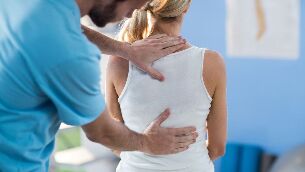
Medications
Drug therapy can include drugs from different pharmacological groups, depending on a combination of various factors. In most cases, patients need to follow the doctor’s advice:
- NSAID;
- Corticosteroids;
- Muscle relaxants;
- Cartilage protection agent;
- B vitamins;
- Vitamin D.
Patients with severe radiculopathy who cannot be relieved by non-steroidal anti-inflammatory drugs or analgesics may experience obstruction. This process involves directing lidocaine or neocaine solution (sometimes used in combination with corticosteroids) directly into the area where the compressed nerve passes. They have no therapeutic effect, but they can quickly eliminate even neurogenic pain. However, the implementation of the blockade requires special skills and absolute sterility, because this type of injection can lead to serious complications.
Manual therapy
Correctly believe that manual therapy is one of the main components of the treatment of various causes of back pain, because it can restore the normal anatomy of the spine, and at the same time:
- Improve the quality of nerve impulses transmitted along the peripheral nerves to all organs of the body;
- Activate blood circulation and lymphatic flow;
- Start the natural process of human body recovery and create favorable conditions for its flow;
- Enhance immunity and enhance the body's ability to adapt to new life conditions.
The use of special manual techniques that directly act on the spine and surrounding tissues can eliminate pressure on various anatomical structures at the root of the spine, thereby eliminating pain, including pain that radiates to limbs and other parts of the body. Similarly, with their help, it is possible to increase the distance between the vertebral bodies, which provides the most favorable conditions for restoring the deformed intervertebral discs of the vertebral bodies, and the active kneading of the muscles helps eliminate functional obstacles and increase the spineMobility and flexibility accelerate the metabolic process.
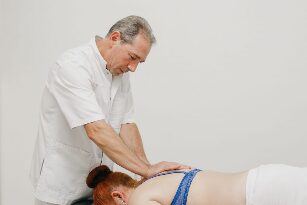
We do not have a common treatment standard, we use a separate method for each patient. Over the years, the author's Gritsenko technology has shown high efficiency. This means that it has a special effect on the spine, not only to eliminate back pain, but also to eliminate its causes. The normalization of spinal cord segmental nerves helps to improve the function of internal organs and eliminate the cause of its disease development.
Therefore, according to the author's Gritsenko method, patients with back pain can rely on obvious positive changes after 1-2 manual treatments. In order to get the greatest possible result, how many steps will need to be performed, and select the combination for each patient individually.
Physical Therapy
Physical therapy should be performed outside the acute phase of the disease. With its help, it is possible to enhance the effect of other influencing methods. Usually, the patient is prescribed a procedure characterized by anti-inflammatory, analgesic, and antispasmodic, namely:
- Electrophoresis;
- Traction therapy (spine traction);
- UHF;
- Laser therapy;
- Ultrasound therapy etc.
Exercise therapy
Physical therapy is not the last step in the treatment of back pain. The stability of the results largely depends on the regularity and correctness of its implementation, because the main purpose of exercise therapy is to strengthen the muscles of the back corset, which will provide support for the spine and reduce the load on the intervertebral disc. In addition, exercise therapy helps to improve the quality of blood circulation, leading to a more active supply of drugs and nutrition to the diseased area, thereby improving the therapeutic effect.

However, it is not recommended that you choose a set of exercises yourself, because performing some generally recommended exercises will harm the patient due to excessive tension of certain muscle groups. Therefore, the development of the optimal complex should be trusted by the physician and rehabilitation physician, who will guide a person to perform each exercise correctly.
Therefore, although every adult is familiar with back pain, it is not worth treating as harmless. This negligence can lead to serious complications, which can only be resolved by surgery at best. In the worst case, patients will face disability. Therefore, if back pain occurs with enviable regularity or is very severe, please make an appointment with a neurologist to find out the real cause of the discomfort. After all, it is easier to prevent this disease in the early stages of development.

























